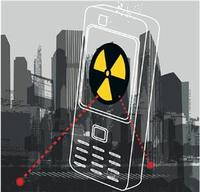-
Nuclear summit focuses on terrorist nukes

The Seoul nuclear summit focused on the risk of nuclear terrorism; there are two risks: first, fissile materials, which terrorists may use to construct a dirty bomb, is kept at thousands of medical, research, and industrial facilities around the world – often without sufficient security; second, constructing a Hiroshima-type bomb is not as difficult as we may think
-
-
A nuke blast in D.C. would not destroy city: report
A study finds that a 10-kiloton bomb detonated in Washington, D.C. would destroy many buildings and kill many people, but it would not completely destroy the city; says one expert: “If you are thinking about (a city) being wiped off the face of the earth, that’s not what happens”
-
-
MRIGlobal awarded $9 million to evaluate detection gear
Kansas City company in a $9 million contract with the U.S. Army to test and evaluate equipment to identify chemical, biological, and radiological hazards in the field
-
-
Scientists develop a dirty bomb detection system
As part of a £3 million international project funded by the European Commission, scientists at the University of Liverpool are developing a mobile detection system for nuclear materials that could prevent the construction of atomic weapons and dirty bombs
-
-
Monitoring nukes with social media

Acting Undersecretary of State for Arms Control Rose Gottemoeller is actively trying to find a way to incorporate social media tools to prevent nuclear weapons proliferation and keep fissile materials out of the hands of terrorists; the department wants to have crowdsourcing tools developed that could help ordinary citizens monitor a government’s nuclear activity and whether it was adhering to its stated promises
-
-
U.K. worried about dirty bombs

U.K. deputy prime minister Nick Clegg warned that materials to make a dirty bomb are readily available – so much so, that police forces cannot hope to contain such a threat; “That is a stateless threat, impossible for any national police force, no matter how advanced, to contain,” he said
-
-
U.S. helps Ukraine detect dirty bombs at Euro 2012 tournament
In advance of the Euro 2012 soccer tournament in Ukraine, security officials are stocking up on radiation detectors due to growing concerns of a dirty bomb attack during the event
-
-
Fukushima accident caused only low levels of fallout in U.S.
Fallout from the 2011 Fukushima Dai-ichi nuclear power facility in Japan was measured in minimal amounts in precipitation in the United States in about 20 percent of 167 sites
-
-
Nuclear accidents pose “essentially zero risk" to public health
A new study by the U.S. Nuclear Regulatory Commission (NRC) concluded that there is only a “very small” risk to public health if a severe nuclear accident were to occur in the United States
-
-
Illinois first responder receive wearable radiation detectors
First responder across Illinois will soon be outfitted with portable personal radiation detectors to detect dirty bombs and increase safety
-
-
New way to detect underground nuclear tests
A new analysis of satellite data from the late 1990s documents for the first time the “uplift” of ground above a site of underground nuclear testing, providing researchers a new tool for analyzing the strength of underground nuclear detonation
-
-
Researchers develop glow in the dark explosive detectors
Researchers at the Massachusetts Institute of Technology (MIT) have developed new explosives and chemical detectors that glow when dangerous substances are present
-
-
RMD awarded $3.65 million in government funding for nuclear detection research
Last week RMD Research was awarded two contracts worth $3.65 million total by DHS’ Domestic Nuclear Detection Office to develop gamma and neutron radiation detectors
-
-
U.S. deploys radiation detectors in Chinese port
As part of its ongoing efforts to secure terrorists from attacking the global shipping system via cargo container, the United States recently reached an agreement to deploy radiation scanners at the world’s largest container processing port in Shanghai
-
-
Hybrid detector monitors alpha, beta, and gamma radiation simultaneously
By combining three layers of detection into one new device, a team of researchers from Japan has proposed a new way to monitor radiation levels at power plant accident sites; the device could limit the exposure times of clean-up workers by taking three measurements simultaneously
-
- All
- Regional
- Water
- Biometrics
- Borders/Immig
- Business
- Cybersecurity
- Detection
- Disasters
- Government
- Infrastructure
- International
- Public health
- Public Safety
- Communication interoperabillity
- Emergency services
- Emergency medical services
- Fire
- First response
- IEDs
- Law Enforcement
- Law Enforcement Technology
- Military technology
- Nonlethal weapons
- Nuclear weapons
- Personal protection equipment
- Police
- Notification /alert systems
- Situational awareness
- Weapons systems
- Sci-Tech
- Sector Reports
- Surveillance
- Transportation
Advertising & Marketing: advertise@newswirepubs.com
Editorial: editor@newswirepubs.com
General: info@newswirepubs.com
2010-2011 © News Wire Publications, LLC News Wire Publications, LLC
220 Old Country Road | Suite 200 | Mineola | New York | 11501
Permissions and Policies
Editorial: editor@newswirepubs.com
General: info@newswirepubs.com
2010-2011 © News Wire Publications, LLC News Wire Publications, LLC
220 Old Country Road | Suite 200 | Mineola | New York | 11501
Permissions and Policies
